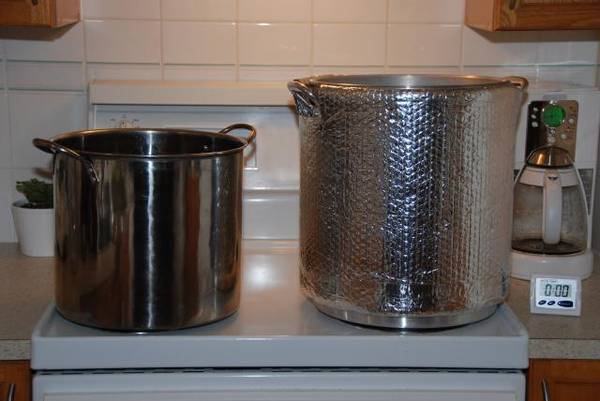So with my electric brewery finished and ready to go I set about today on my very first all-grain brew. The day did not go without problems but in the end I have 42L of APA in the fermentation fridge that looks, smells and tastes amazing!
I tested the system several times, re-did valves and bulkheads and water tested it twice ... but somehow on brew day I had leaks, very small ones but leaks! After so much testing and prep work I was a little annoyed.
I made some mistakes with temperatures and valves, forgetting to close them before removing hoses etc .. but luckily my brew-room has an in-ground drain so spills and cleaning weren't really a big issue.
Most of my target vs actual numbers were pretty close:
Boil Volume target was 57.8L, I got 54 into the kettle before the MT & HLT were empty - I swear I had enough water for my sparge but will double check my calcuations for next time. I added a little extra water to the kettle to make up the volume.
Estimated pre-boil gravity target was 1.044. I got 1.047 so pretty close and was happy with that.
I didn't measure the post boil volume but the target was 46.8L. I know I was over that as I had setup in Beersmith my boil-off rate at 11L but with the PID's I was able to 'tone down' how vigorously the boil happened so didnt lose that much to evaporation. I'll need to do another water test to calculate the boil-off rate with the adjusted PID settings.
Est Post Boil gravity target was 1.056 and I hit 1.058 so once again was well happy!
My target was 42L into the fermenter and I made that, with some extra in the kettle (again due to reduced boil off) but left that as I forgot to add my hop filter so didn't want to suck up to much trub/hop etc.
All in all a great day! I've kept some of the spent grain to make some bread and some treats for my dog. I'm looking forward to brewing again on the weekend!
Here's my fermenter in its little fridge hooked up to a cheap one-relay STC knock-off (I'll grab an enclosure and some cable glands from Jaycar tomorrow and do it up properly!). At the moment its hooked up to a hair dryer as the heating source, but I'll also grab a heating mat tomorrow to replace that. I don't expect to need to cool the fridge as its quite cold down the back of the warehouse so is only set to heat ... 19C.
Cheers :chug:
clearwort.jpg
1stAGfermenation.jpg






